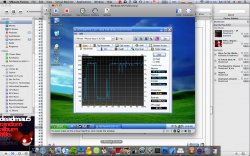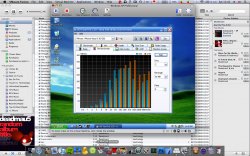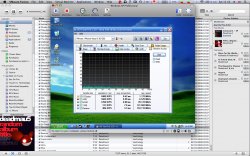Thanks for the link. I'm still learning about the possibilities. 48GB does sound enticing for the prices listed.
Considering Snow Leopard is supposed to come in under 6GB installed, that leaves plenty of room for other small apps, growing pref and library files, etc.
Now the question is: is the transfer speed adequate to run an OS and will the OS install and run from the card?
Well, I got my answer to Question #3:
Will OSX fit and have room to grow (library files, pref files, etc) on 32GB?.
All the system, library and Application files on my 320GB HDD (excluding only the user files) comes out at 25GB. It's worth mentioning that I have some pro apps like the entire Adobe CS3 suite and Aperture.
A 32GB or 48GB SSD would allow plenty of space to run the entire system, save for my stored files (iTunes, Photo Libraries, etc) which would go on the HDD.
Remaining are the following questions:
1 - Will OSX install on the 32GB SSD in the Expresscard slot and boot?
2 - Will there be a speed bottle neck? Is the Expresscard I/O as fast as the HDD I/O?
Anybody care to chime in?
Please don't mind as I converse with myself here...

Just consider this me thinking out loud and creating a record for other members seeking an answer to this question... Feel free to chime in

...
Q#2 Has been answered also:
2 - Will there be a speed bottle neck? Is the Expresscard I/O as fast as the HDD I/O?
Corsair 128GB internal SATA SSD:
Read: 90MB/sec
Write: 70MB/sec
Verbatim SSD expresscard (16/32/64GB):
Read: 125MB/sec
Write: 30MB/sec
So it looks like the expresscard SSD would actually be faster at reading than the tried and proven internal SATA SSD's on the market today. It's the writing that's less than half.
I'm not an expert, but how much bandwidth does OSX need to write to its system files?
If we could somehow put the User folder and VRAM (where most of the writing occurs) on the internal HDD, we'd have a blazing fast OS!
The remaining question:
1 - Will OSX install on the SSD in the Expresscard slot and boot?
EDIT: Thiol, your suggestion on NewEgg actually has better read speeds than a SATA internal SSD and write speeds that are just about on par:
FileMate SolidGO 48GB SSD ExpressCard
Read: up to 115MB/s
Write: up to 65MB/s
So in theory, because write speeds match up, you can even leave the VRAM on the expresscard. The only files that would reside on the internal HDD would be the User files.
I'm not sure if there's a way to change that. However, the largest files can be easily placed on the HDD without any Terminal wizardry: iTunes, Photos, Movies.
I think 48GB would be good enough to accomplish this. Now on to question #2...





